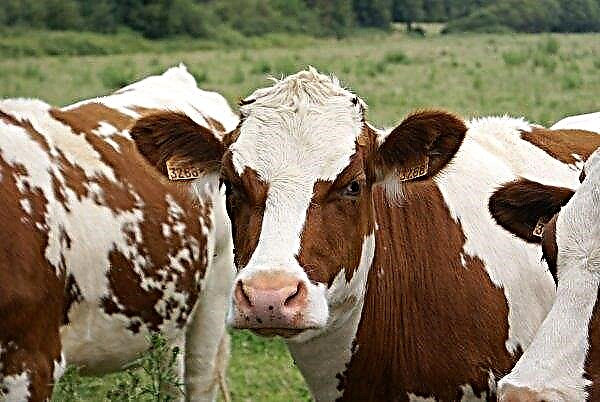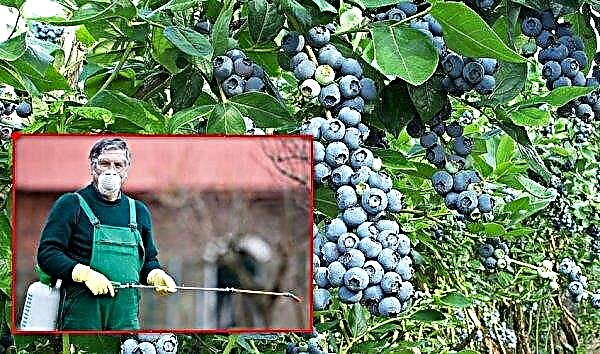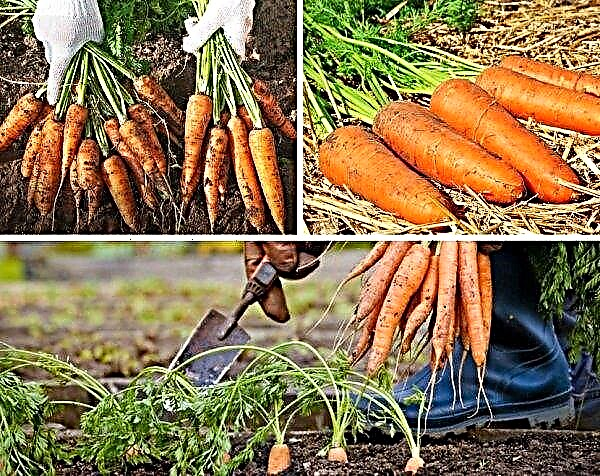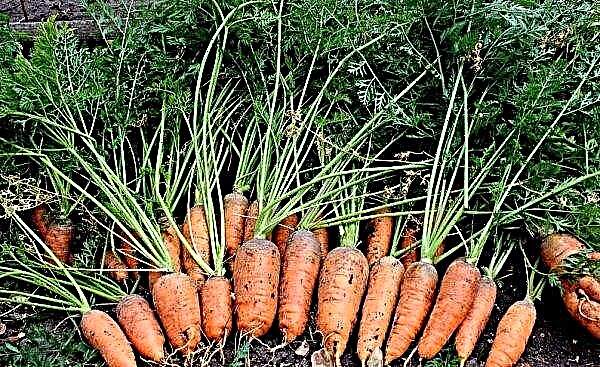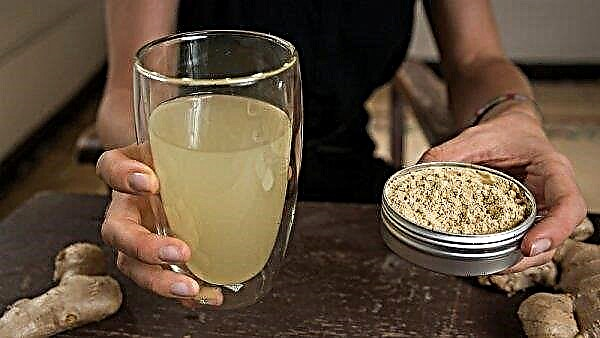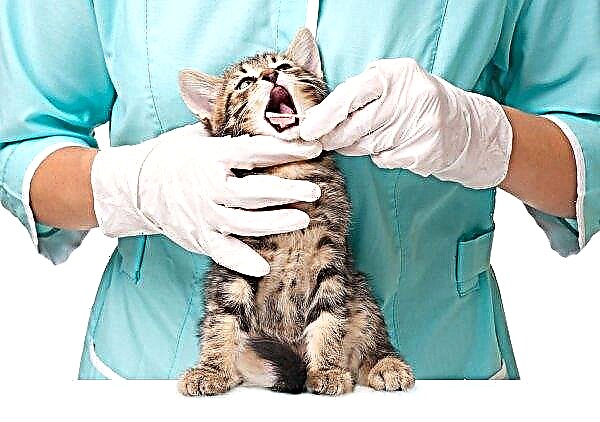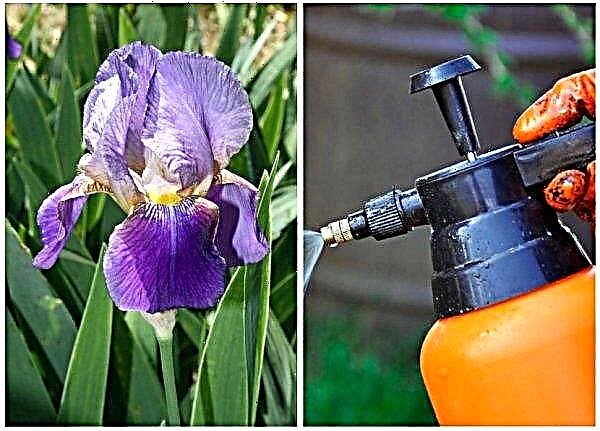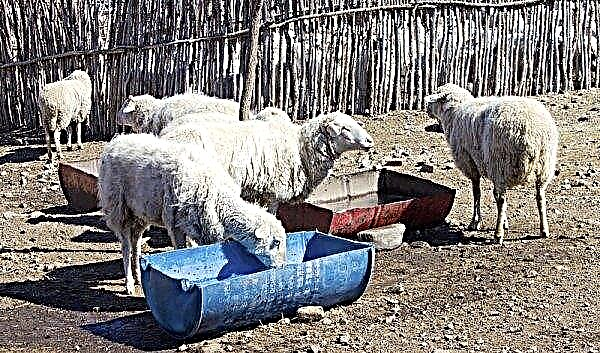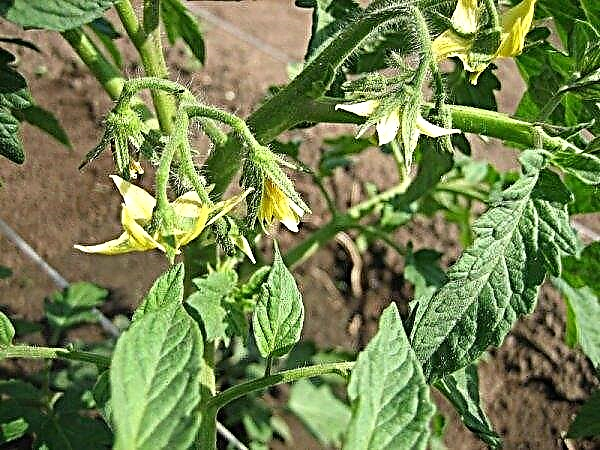A properly designed pig diet is half the success of growing large and meaty individuals. To be able to select the menu, you need to understand the feed and know how to combine them. Let's consider what feeds exist, how to prepare them for feeding, and also how to properly compose a diet for a pig, depending on the goals pursued.
Feed classification
Foods are called foods that are used to feed animals, they are rich in useful substances and are a nutrient base for quick weight gain. There is a specially developed classification of feed, which allows you to attribute this or that product to a certain type.
Vegetable feed
Plant-based foods form the basis of pig diets, so consider a small classification of such feed.
Cereals
Cereal food is necessary for increasing the mass of animals, so it must be present in the diet. Cereals contain a large amount of carbohydrates, vegetable proteins, and coarse fiber.
Cereals used for feeding are:
- Barley - The best cereal for a pig, which is 90% absorbed by the body. Barley should make up 70% of all cereals on the menu, because they can feed individuals of any age.
- Corn - occupies a small percentage in the composition of the pig’s cereal menu, because it contains a small amount of proteins responsible for the quality of meat.
- Oats - It has a maximum fiber content, so it must be entered into the menu of young animals, suckers and suckling queens.
- Peas - added to the diet in a steamed form, saturates the body with vegetable protein and significantly improves the quality of animal meat.
- Wheat - A popular feed for pigs, almost on a par with barley, contains a large amount of nutrients, causes rapid saturation of the body and gives a large supply of energy.
- Rye - gives good results in use for growing and fattening, leading among other cereals.
- Millet - It occupies 15% of the composition of grain mixtures for pigs, in its composition it is similar to corn.
Succulent feed
Vegetables and root crops are combined into a group of green feeds, they are usually given in a grated form, mixing with crushed grain. The amount of succulent feed fed is usually increased in the absence of green feed.
Juicy foods that are regularly given to pigs include:
- Potatoes - the main root crop in the pig’s diet (up to 30% of the total amount of food on the menu), it is usually given in boiled form: this way it is better digested.
- Carrot - healthy food, improves the taste of animal meat. Often used to feed sows and suckers to saturate the body with vitamins.
- Beetroot - give both fodder and sugar appearance. The second is more nutritious, can be given with tops. Usually it is boiled before serving, so that it is better absorbed.
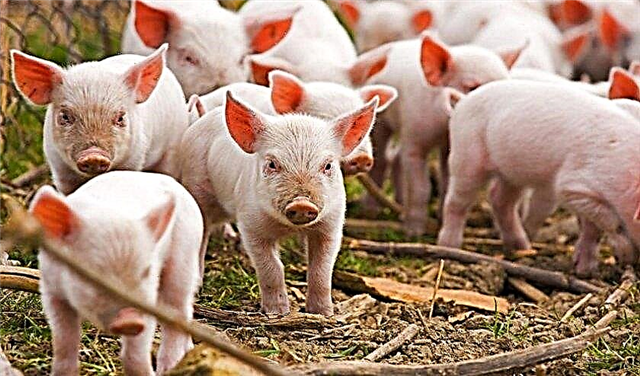
Green feed
Green food is used to feed pigs in order to saturate their body with proteins and nutrients. Green feeds are seasonal, but they can also be dried and used as hay, with a slight loss of nutrients.
The greens used to feed pigs are presented as:
- beetroot leaves;
- peas;
- clover;
- dandelion;
- young swans;
- alfalfa;
- wood lice;
- nettles.
Combined silo
Plant-based silage is the most suitable nutritious meal for pigs. The uniqueness and profitability of the finished product is that it can be prepared by combining different products that can be found in any household.
The composition of the combi-silos can be represented:
- potatoes, clover grass, carrots with tops, leaves of cabbage (in a ratio of 4: 3: 1,5: 1,5);
- carrots, fodder beets, green mass of legumes, hay flour (in a ratio of 2: 5: 2: 1);
- corncobs, pumpkin, legumes (in a ratio of 6: 3: 1).
Harvesting vegetables and root vegetables is better raw, and boiling potatoes.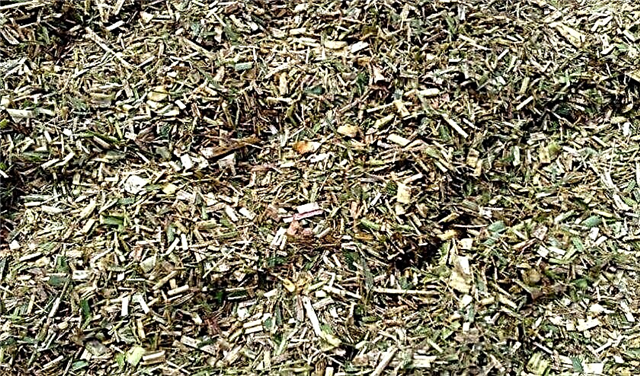
Animal feed
Pigs can consume any food, so they are often offered the waste that remains after human consumption of food. Useful waste includes fish and meat, with a large amount of protein and minerals. Before serving the waste, they are well boiled and grinded so that the pig can chew them normally and not get hurt.
Important! It is noticed that after eating meat and fish waste, pig meat smells unpleasant, therefore, 2 months before slaughter, they are excluded from the menu.
Dairy products (whey, milk, buttermilk, reverse) positively affect the quality characteristics of meat and fat, so they are given not only to suckers, but also to fatteners. Animals are happy to eat such food.
What are premixes for?
To quickly feed a pig, the diet is enriched with nutritional supplements. They begin to feed from a young age (in the second week of life). Thanks to premixes for 2 months, the weight of the piglet can increase 4 times.
In addition to rapid growth and weight gain by pigs, premixes can improve the taste of meat, positively affect the immunity of animals. Since pigs gain weight faster than usual, this saves on food by shortening the growing time.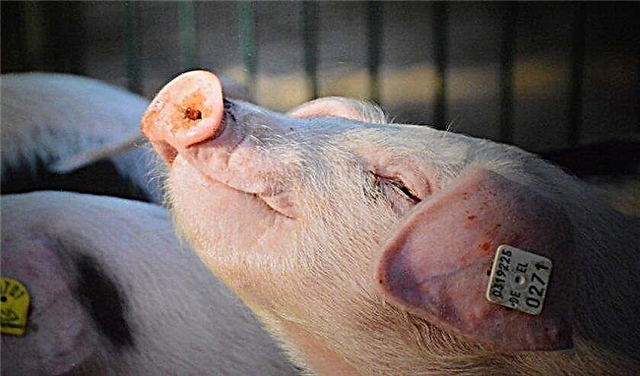
The composition of feed additives
Depending on the age and special periods of the pig’s life, the percentage of the components of the feed additives is different, but the list of useful components remains unchanged.
Feed additives are rich in:
- phosphorus;
- magnesium
- sodium;
- lysine;
- threonine;
- manganese;
- iron;
- cobalt;
- copper;
- zinc
- selenium;
- vitamins A, D3, E, B6, B12;
- nicotinic acid;
- pantothenic acid.
Amount of additives
The amount of additives used is affected by which group the animal belongs to. Always on the packaging with additives contains the necessary information on the norms of feeding. For example, pigs that weigh more than 60 kg should consume 1% of the daily dietary supplement per day.
For pregnant and lactating sows, 3% of additives are prepared, and piglets (10-60 kg of weight) are given 2.5%.
Types of feeding
There are several types of animal feeding that can be successfully used on the farm, so we will consider each type in more detail.
Dry feeding pigs
For the organization of dry feeding, granular compound feeds are used, which, in addition to a number of advantages, have serious disadvantages.
- The advantages of the dry type of feeding include:
- better absorption of nutrients by the body;
- high safety on hygienic characteristics;
- convenience and ease of use;
- saving time for catering.
Among the shortcomings are:
- Minuses
- the high cost of raw materials;
- digestive problems in animals;
- the presence of a large amount of dust from feed, which adversely affects the health status of animals and staff serving the pigsty;
- strong spread of such feed by pigs.
Did you know? Dry type of feeding is the most popular and is used in 70% of all pig farms in the world.
Liquid feeding
The liquid type of feeding allows you to use any food, which significantly saves finances.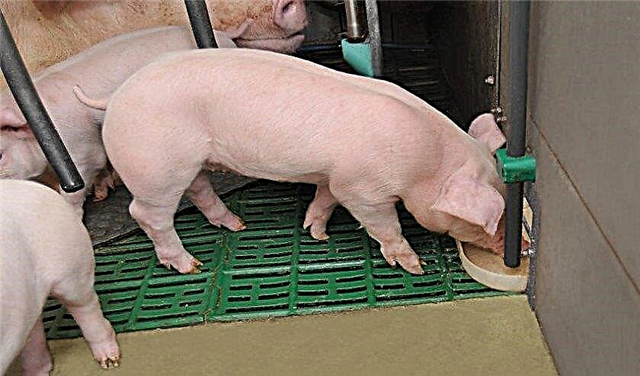
- In addition, the liquid type of feeding has several advantages:
- the possibility of refusing drinkers;
- the ability to accurately dispense food;
- minimal spreading of feed;
- best weight gain by animals.
- The disadvantages of liquid feeding include:
- minimum shelf life;
- excess humidity in the room due to constant fumes;
- the need to use expensive metal feeders.
Usually, at home, a combined type of food is used, which consists of both dry and liquid feeds, which is much more profitable than feeding animals only with purchased dry mixed feeds or organizing liquid feeding, which takes a lot of time.
Feed preparation
Before feeding the animals, depending on the type, they should be pretreated.
Vegetable preparation
Before feeding pigs vegetables, they are pre-washed well under running water, chopped with a knife or with a grater. Beets and potatoes are best steamed or boiled, if desired, you can do the same with other vegetables.
Hay preparation and rubbish
To improve the digestive process, hay and hay dust are recommended to be pre-steamed, for this they are poured with boiling water for 1-2 hours. To make it easier for animals to consume long particles of hay, they are crushed.
Cereal preparation
Cereals necessarily grind, achieving the finest grinding. All cereals can be ground in advance, except for corn and oats - after such a treatment, they quickly oxidize and begin to bitter. Peas are boiled before feeding for better absorption and digestion.
Fresh green fodder preparation
Fresh green food is well ground before feeding so that the coarse stems are normally digested by the animals. Harvesting grass is not carried out, it is always given freshly picked to exclude the possibility of getting rotten or wilted parts.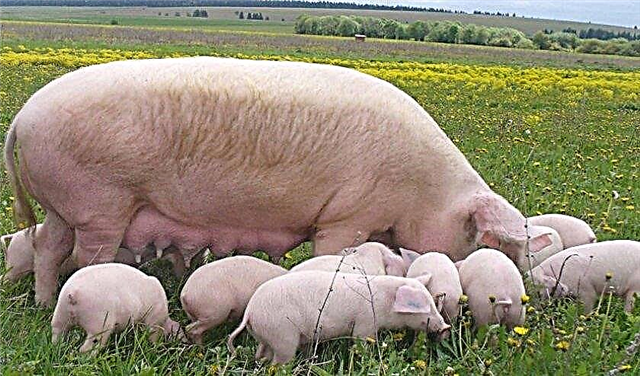
Combined silo preparation
The composition of the silo was considered earlier, so we will discuss the nuances of preparing this food product:
- root crops and vegetables silage after full ripening, corn - during the period of milk-wax maturity, pea greens - before flowering;
- thoroughly wash root vegetables and vegetables;
- crushed components are well packed in plastic bags to displace air, this will extend the shelf life of perishable products;
- can not be used for siloing nettles and root crops of root crops.

Feed yeast
To enrich the feed mass with vitamins and minerals, the yeast method is used. The procedure is performed using ordinary baker's yeast. Such food should be 1/3 of the daily intake of concentrated feed. Such food can increase the appetite and the rate of mass gain by animals.
Consider 2 methods of yeast:
- Unpaired - 20 g of warm (+ 40 ° C) water use 100 g of yeast. Finely chopped feed in the amount of 10 kg is poured into the resulting solution. Insist food for 8 hours, stirring every 30 minutes.
- Starter - the dough is prepared in advance. For this, 100 g of yeast and 2 kg of feed are used in 5 liters of warm water. Insist 5 hours, then add 15 liters of warm water and 7 kg of feed, stand for another 2 hours.
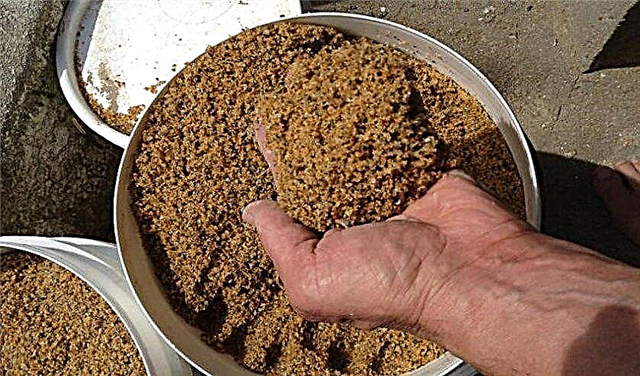
What can not be given to an animal
Food fed to pigs must be of high quality, without mold, parasites, fungus.
When using green fodder, it is necessary to pay attention to their composition.
Be sure to exclude from the diet:
- spurge;
- black nightshade;
- horse dill;
- pitted apricots;
- caustic buttercup.
The above products are poisonous and life-threatening animals.
Important! Do not give pigs green potatoes and one that is covered with sprouts. Before feeding, the sprouts must be removed.
Diet and Feeding
The age and special periods of life of pigs play a large role in the organization of feeding, therefore, we consider the feeding rate for each group of animals.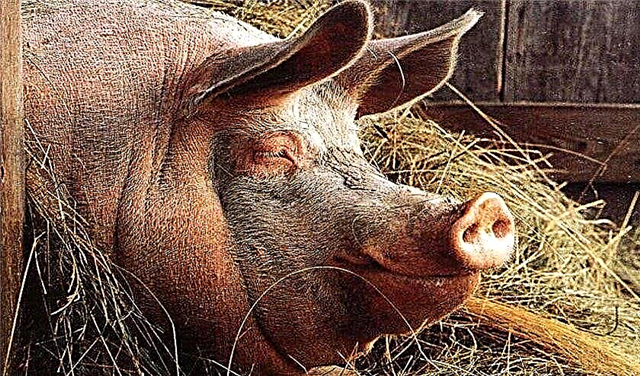
Pig Feeding Rules
In order to avoid problems during the feeding of pigs, it is necessary to follow some recommendations:
- The feeding regime must be observed, i.e., food is offered daily at the same time.
- Before each feeding, the feeder is cleaned of food debris, washed once a day.
- The diet should be balanced, which is achieved by feed additives.
- Feed use only quality and clean.
- All components of the feed are best given in powdered form.
- Since pigs are very fond of digging the ground, with free grazing, make sure that this activity is safe.
In the tables of feeding rates, an approximate daily diet for 1 individual is presented depending on age and weight.
Factors affecting the daily intake of feed by pigs
The amount of food consumed by pigs may depend on:
- time of year;
- the age of the animal;
- gender
- health conditions;
- weather conditions.
Feeding rates for suckling piglets
It is necessary to begin to accustom suckers to solid food a week after birth. At this time, they are given grains of corn or barley, previously fried. To facilitate the process of digestion of food, any acidophilic fermented milk product is added to the menu. Juicy feed is given to piglets on the 10th day of life, starting with grated carrots. Boiled potatoes are introduced on the 20th day of life.
Juicy feed is given to piglets on the 10th day of life, starting with grated carrots. Boiled potatoes are introduced on the 20th day of life.
When pigs reach 1.5 months, they are weaned from the lactating female.
At this time, food should be three meals a day, in the following ratio:
- 80% concentrates;
- 10% of vegetable crops and root crops;
- 5% legume flour;
- 5% meat and bone meal.
Did you know? In Canada, Pharmatic has created a sow robot that feeds piglets. Milk arrives strictly on schedule, and the robot can warm the kids and even makes grunting sounds.
Piglet feeding rates
When animals reach a weight of 20 kg, the composition of their diet is changed. To enhance muscle growth, crushed greens, root vegetables and vegetables are added to the concentrates. In summer, a large amount of greens is added to the menu, mixing with boiled potatoes and grains.
Feeding rates for adult pigs
Upon reaching animals 40-50 kg in weight, the composition of the diet is changed so that the weight gain is faster. Every day, the fattener should add 650 g. When the pig is 6 months old, its weight should be at least 100 kg. In order to maximize weight gain, the animal is given dry food, which is characterized by high nutritional value and minimal amount of fiber.
In order to maximize weight gain, the animal is given dry food, which is characterized by high nutritional value and minimal amount of fiber.
Feeding rates for sows
The first 3 months the sow's diet is no different from the usual. A month before birth, the availability of energy-valuable feed increases by 20%. Young sows (up to 2 years old) should receive food rich in vitamins and minerals.
Suckling sows are offered the most nutritious food that will allow them to feed piglets with milk. Immediately after farrowing, sows are not given food, offering only water. After 5 hours, the pig is offered 700 g of liquid concentrate.
An increase in the amount of fed food should be carried out gradually so that the sow does not get sick. After a week, the amount of food fed should reach normal levels.
Feeding rates for boars
The degree of sexual activity and the performance efficiency of boars directly depends on the volume and quality of food consumed. Depletion or obesity, which adversely affect the above indicators, should not be allowed.
In boars-producers, metabolic processes in the body are significantly accelerated, so these animals provide a large amount of nutritious food. When the boars rest from mating, the amount of fed food is reduced by 20%. The basis of the ration for boars is grain, oilcake, meal, meat and fish waste, peas.
Pig Feeding Technologies
There are special feeding technologies that can achieve the desired result in raising pigs.
Fat for fat
Individuals weighing over 100 kg are suitable for fattening. In the process of feeding, you can achieve an animal weight of 200 kg, while the weight of fat is 30% of the total weight of the individual. To feed animals during this period, it is necessary to use carbohydrate foods: potatoes, root crops, corn, bread, buckwheat.
In the first period of fattening (with a weight of 100 to 160 kg), individuals are usually fed a wheat-corn mixture of 3 kg per day. In the second period (over 160 kg) animals are fed millet, barley, triticale to improve the quality characteristics of fat.
In fattening for lard, a rough pig diet consists of:
- 4 kg of green food;
- 3.5 kg of pumpkin;
- 3 kg of concentrates;
- 50 g of salt.
Meat fattening
Feeding animals for meat begins at the age of 3 months until the animals reach a weight of 120 kg. Usually, intensive feeding technology is used, which implies a duration of feeding for 4 months, i.e. pigs are slaughtered at the age of 7 months.
With meat fattening, it is very important how many times a day an animal eats food. In order to avoid excess fat, it is better to feed the pig 3 times a day.
Fattening for meat is divided into 2 periods. In the first period, the animal adds 500 g per day in weight, in the second - 750 g. The daily ration for animals is presented:
The daily ration for animals is presented:
- barley - 400 g;
- peas - 200 g;
- wheat bran - 400 g;
- oilcake - 150 g;
- potatoes - 1 kg;
- legumes - 2 kg;
- chalk - 25 g;
- salt - 30 g.
Bacon Feeding
Bacon fattening begins at the age of 2.5 months, before which the boars are castrated. In this case, young growth should have a weight of 25 kg.
Important! 3 months before slaughter, foods that negatively affect the quality of meat (soy, bran, fish waste) are excluded from the diet.
The daily diet for bacon feeding is presented:
- green food - 3 kg;
- back - 1.5 kg;
- concentrates - 1.5 kg;
- root crops - 2 kg;
- salt - 20 g.

Maintaining the appetite of pigs
To maintain a good animal appetite, you must:
- Allocate more free space for walking;
- daily give salt in sufficient quantities;
- heat treat feeds that are suitable for this (boiled food is eaten better);
- add soy milk to the mash, which is worse eaten than other types of food;
- add a small amount of apples, pears, plums, the taste of which animals like.
The process of compiling a diet for pigs is not simple and depends on the age, weight and special periods of the animal's life. To make it easier to understand the nuances of feeding, you should carefully consider the above information and take it into account.

